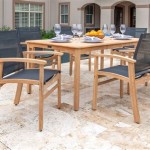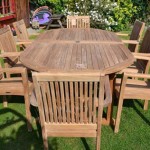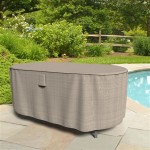How to Fix Plastic Wicker Patio Furniture
Plastic wicker patio furniture offers an attractive and relatively low-maintenance option for outdoor seating and dining. However, exposure to the elements, wear and tear, and accidental damage can lead to breaks, unraveling, and other cosmetic imperfections. While replacing the entire set might seem like the easiest solution, repairing damaged plastic wicker is often a cost-effective and environmentally responsible alternative. This article provides a comprehensive guide on how to fix various types of damage to plastic wicker patio furniture, prolonging its lifespan and preserving its aesthetic appeal.
Before embarking on any repair, it is crucial to assess the extent of the damage. This involves a thorough inspection of the furniture piece, including the frame, the wicker weave itself, and any connecting points. Identify the specific areas requiring attention, such as broken strands, loose weaves, or damaged frame components. Taking photographs of the damage can be helpful for referencing the original weave pattern or frame structure. This initial assessment informs the choice of tools, materials, and repair techniques required.
Gathering the necessary tools and materials is the next essential step. This typically includes a sharp utility knife or scissors, a measuring tape, plastic wicker repair material (matching the original color and width), super glue or plastic adhesive, sandpaper (various grits), a heat gun or hairdryer (optional), a lighter or small torch (optional, for securing ends), and safety glasses and gloves. For frame repairs, you might need additional tools such as a screwdriver, pliers, replacement screws or bolts, and paint suitable for outdoor use.
Repairing Broken or Cut Wicker Strands
One of the most common types of damage to plastic wicker furniture is broken or cut strands. This can occur due to impact, weathering, or simple wear and tear. The repair process involves carefully replacing the damaged section with a new piece of wicker, seamlessly integrating it into the existing weave.
Begin by carefully cutting away the damaged portion of the wicker strand, ensuring a clean and even cut at both ends. Use a utility knife or sharp scissors for this task. Measure the length of the removed section and add a few extra inches to allow for overlap and securing the new strand.
Cut a new piece of plastic wicker repair material to the required length. Thread the new strand through the weave, following the original pattern as closely as possible. This may require some manipulation and patience, especially in complex weave patterns. Use the existing weave as a guide, carefully interlacing the new strand over and under the adjacent strands.
Once the new strand is in place, secure the ends to the existing weave. This can be done using several methods. One common method involves using super glue or a plastic adhesive. Apply a small amount of adhesive to the ends of the new strand and carefully attach them to the underside of the adjacent strands. Hold the strands in place until the adhesive sets.
Another method, particularly useful for securing the ends of thicker wicker strands, involves using a heat gun or hairdryer to slightly soften the plastic. Once softened, the ends can be carefully molded and pressed into place, creating a secure bond. Be cautious when using heat, as excessive heat can damage the plastic.
Alternatively, a lighter or small torch can be used to carefully melt the ends of the plastic wicker, fusing them to the adjacent strands. This method requires a high degree of precision and caution to avoid burning or melting the surrounding wicker. It is recommended to practice this technique on a scrap piece of wicker before applying it to the furniture.
After securing the ends, inspect the repaired area to ensure a seamless and aesthetically pleasing finish. Trim any excess material and smooth out any rough edges with sandpaper. If necessary, apply a color-matching paint to blend the new strand with the existing weave.
Addressing Loose or Unraveled Weaves
Loose or unraveled weaves can compromise the structural integrity and aesthetic appeal of plastic wicker furniture. This issue typically arises from broken or weakened connecting points, causing the wicker strands to loosen and unravel.
Identify the cause of the unraveling. This may involve inspecting the frame for broken or loose supports, or examining the wicker strands for broken or weakened sections. If the frame is damaged, it must be repaired before addressing the weave itself.
Carefully re-weave the loose strands, following the original pattern. Use your fingers or a small tool, such as a blunt screwdriver or awl, to guide the strands back into place. Pay close attention to the weave pattern and ensure that the strands are properly interlaced.
Once the weave is re-established, secure the connecting points to prevent further unraveling. This can be done by using super glue or plastic adhesive to bond the strands to the frame or to each other. Apply a small amount of adhesive to the connecting points and hold the strands in place until the adhesive sets. For larger areas of unraveling, you may need to use cable ties or zip ties to temporarily secure the weave while the adhesive dries.
If the connecting points are severely damaged, they may need to be replaced. This involves removing the old connecting points and installing new ones. Depending on the type of connecting point, this may require the use of screws, bolts, or rivets. Ensure that the new connecting points are compatible with the existing frame and wicker material.
In some cases, the unraveling may be caused by stretched or weakened wicker strands. If this is the case, the strands may need to be replaced entirely, following the same procedure as repairing broken or cut wicker strands.
Repairing Damaged Frame Components
The frame of plastic wicker patio furniture provides the structural support for the entire piece. Damage to the frame, such as cracks, breaks, or loose joints, can compromise the stability and safety of the furniture. Repairing the frame is essential for maintaining the furniture's functionality and prolonging its lifespan.
Identify the type and extent of the frame damage. This may involve inspecting the frame for cracks, breaks, loose joints, or corroded hardware. Determine the materials used in the frame construction, such as metal, wood, or plastic. The repair method will depend on the type of damage and the materials involved.
For metal frames, cracks or breaks can often be repaired by welding. However, welding requires specialized equipment and skills. If you are not experienced in welding, it is recommended to seek the assistance of a professional. Alternatively, metal patches or epoxy can be used to repair smaller cracks or breaks.
For wooden frames, cracks can be repaired by using wood glue and clamps. Apply wood glue to the cracked surfaces and clamp them together until the glue dries. For larger cracks, you may need to insert wooden dowels or splints for added strength. Broken wooden frame components may need to be replaced entirely.
For plastic frames, cracks or breaks can be repaired using plastic adhesive or epoxy. Apply the adhesive to the cracked surfaces and hold them together until the adhesive sets. For larger cracks, you may need to reinforce the repair with plastic patches or fiberglass cloth.
Loose frame joints can often be tightened by tightening the screws or bolts that hold them together. If the screws or bolts are stripped or corroded, they may need to be replaced. In some cases, it may be necessary to disassemble the frame joint and reassemble it with fresh adhesive or epoxy.
After repairing the frame, it is important to protect it from further damage. This can be done by applying a protective coating, such as paint or sealant, to the repaired area. Choose a coating that is suitable for outdoor use and compatible with the frame material.
Regular cleaning and maintenance can significantly extend the lifespan of plastic wicker patio furniture. Periodically wash the furniture with mild soap and water to remove dirt and debris. Avoid using harsh chemicals or abrasive cleaners, as these can damage the wicker and frame. Store the furniture indoors or under a cover during periods of inclement weather to protect it from the elements. By implementing these preventative measures, the need for extensive repairs can be minimized, ensuring that the furniture provides years of enjoyment.

Resin Wicker Patio Furniture Unraveling Hometalk

How To Repair Rattan Wicker Furniture Tools And Tutorial Rattanyard

How To Repair Resin Wicker Chairs Using Glue Gun Atc Furniture 2024

Repair Plastic Wicker On Furniture 6 Simple Steps You Must Know Industry China Pe Rattan Outdoor Material Manufacturer

Wicker Furniture Repair Guide Jessica Welling Interiors

How To Repair Plastic Wicker Furniture 7 Easy Steps

Fix Your Rattan Furniture Problem Repairs Revamps Faqs

Fix Rattan Garden Furniture Resin Wicker Repair Outdoor

How To Spray Paint Resin Wicker Chairs If You Dare

How To Repair Your Resin Wicker Outdoor Furniture Doityourself Com
See Also








